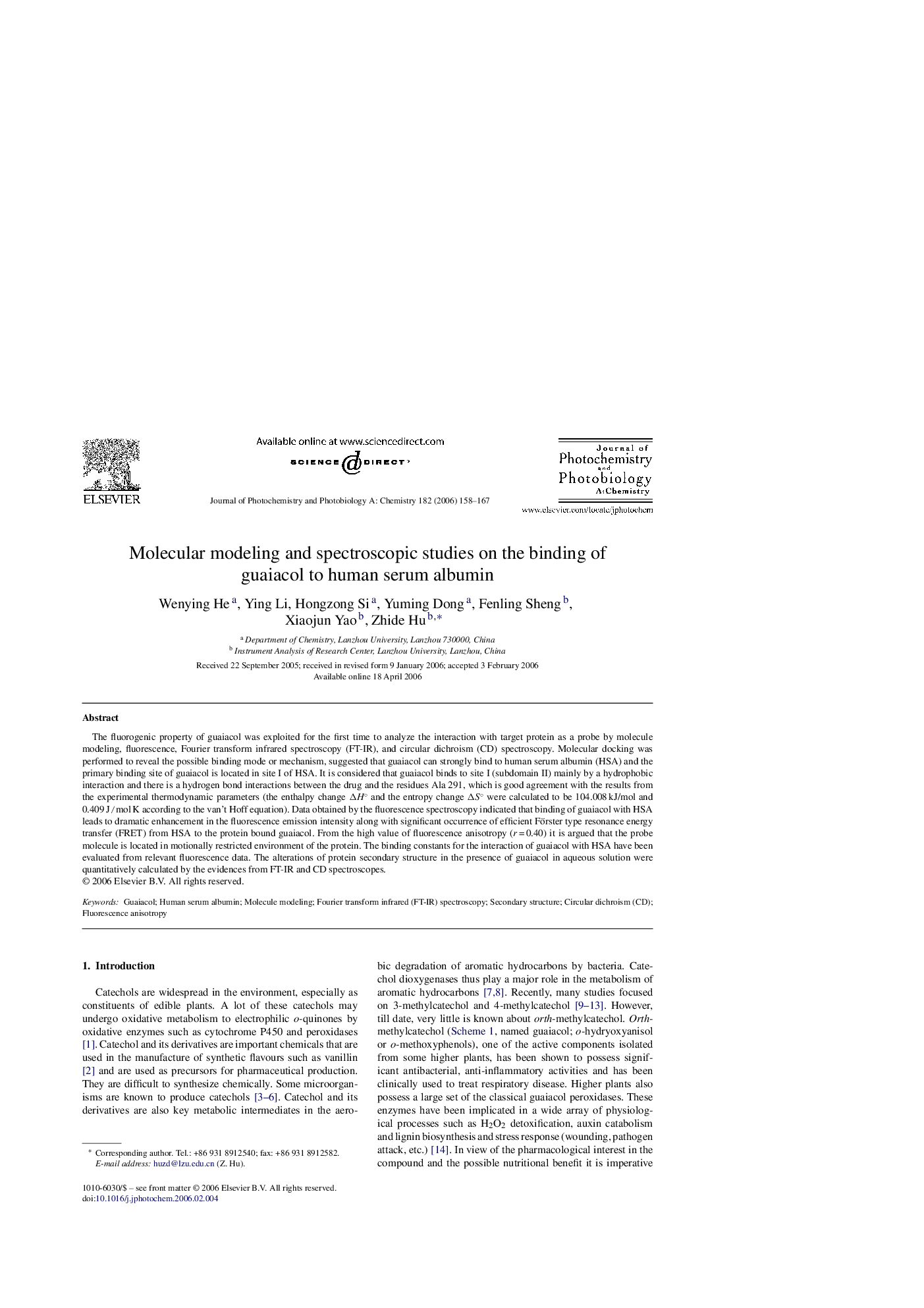| Article ID | Journal | Published Year | Pages | File Type |
|---|---|---|---|---|
| 28700 | Journal of Photochemistry and Photobiology A: Chemistry | 2006 | 10 Pages |
The fluorogenic property of guaiacol was exploited for the first time to analyze the interaction with target protein as a probe by molecule modeling, fluorescence, Fourier transform infrared spectroscopy (FT-IR), and circular dichroism (CD) spectroscopy. Molecular docking was performed to reveal the possible binding mode or mechanism, suggested that guaiacol can strongly bind to human serum albumin (HSA) and the primary binding site of guaiacol is located in site I of HSA. It is considered that guaiacol binds to site I (subdomain II) mainly by a hydrophobic interaction and there is a hydrogen bond interactions between the drug and the residues Ala 291, which is good agreement with the results from the experimental thermodynamic parameters (the enthalpy change ΔH° and the entropy change ΔS° were calculated to be 104.008 kJ/mol and 0.409 J/mol K according to the van’t Hoff equation). Data obtained by the fluorescence spectroscopy indicated that binding of guaiacol with HSA leads to dramatic enhancement in the fluorescence emission intensity along with significant occurrence of efficient Förster type resonance energy transfer (FRET) from HSA to the protein bound guaiacol. From the high value of fluorescence anisotropy (r = 0.40) it is argued that the probe molecule is located in motionally restricted environment of the protein. The binding constants for the interaction of guaiacol with HSA have been evaluated from relevant fluorescence data. The alterations of protein secondary structure in the presence of guaiacol in aqueous solution were quantitatively calculated by the evidences from FT-IR and CD spectroscopes.
